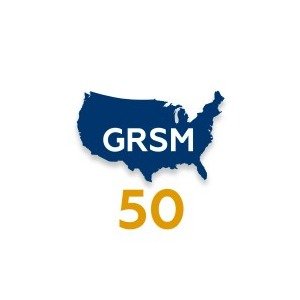Best Art & Cultural Property Law Lawyers in Anchorage
Share your needs with us, get contacted by law firms.
Free. Takes 2 min.
List of the best lawyers in Anchorage, United States
About Art & Cultural Property Law in Anchorage, United States
Art & Cultural Property Law in Anchorage falls under a specialized area of law that deals with the protection and management of art and cultural assets. This includes issues related to the acquisition, ownership, and disposition of artworks and cultural heritage properties. Given Anchorage's rich cultural history and indigenous heritage, this field of law is particularly significant for protecting Alaska Native artifacts and managing museum collections.
Why You May Need a Lawyer
There are several situations where you might need legal assistance in Art & Cultural Property Law:
- Acquisition or sale of artwork or cultural property
- Inheritance disputes involving cultural assets
- Litigation over ownership or authenticity of art pieces
- Management of cultural artifacts within museums or galleries
- Legalities surrounding archaeological digs and artifact discoveries
- Restitution claims for stolen or returned artworks
Local Laws Overview
In Anchorage, several key legal frameworks impact Art & Cultural Property Law:
- The Alaska Native Claims Settlement Act (ANCSA) which grants land ownership to Alaska Natives, affecting cultural property rights
- Local ordinances protecting historical landmarks and cultural sites
- State laws dealing with archaeological resources and the nondestructive examination of cultural relics
- Federal laws such as the Native American Graves Protection and Repatriation Act (NAGPRA), which addresses the rights to Native American artifacts and remains
Frequently Asked Questions
What is cultural property?
Cultural property refers to artifacts, works of art, and other items that hold cultural significance. This includes historical buildings, artworks, and indigenous artifacts.
How can I determine if I own cultural property legally?
To determine legal ownership, review any documentation related to the purchase or inheritance of the item and consult with a lawyer specializing in Art & Cultural Property Law.
What steps should I take if I discover an artifact on my property?
Contact local authorities, such as the State Office of History and Archaeology, to ensure proper documentation and compliance with local, state, and federal laws.
Can I sell cultural artifacts I own?
Selling cultural artifacts may require adherence to specific legal standards, especially when items have significant historical or cultural import. Consult with a legal expert before proceeding.
What is the process for repatriating cultural property?
Repatriation involves returning cultural artifacts to their place of origin or rightful owners. This process typically requires legal negotiation and, often, collaboration with federal agencies.
What are the penalties for disturbing an archaeological site without a permit?
Penalties may involve significant fines and legal action. It's important to seek legal guidance before engaging in activities at archaeological sites.
How can I verify the authenticity of an art piece I intend to purchase?
Work with a reputable art dealer and obtain authentication from certified appraisers or specialists, possibly with the guidance of an attorney familiar with art law.
Who governs the export of cultural property from Anchorage?
Export of cultural property is regulated by federal laws and can also be subject to international treaties. Legal counsel can help navigate these regulations.
What legal protections exist for indigenous cultural artifacts?
Laws such as the NAGPRA provide substantial protections for indigenous artifacts, including repatriation measures and regulations on excavation and ownership.
Are there any special concerns for art loans between museums?
Museum loans involve contractual agreements and insurance considerations to protect artworks. Attorneys can help draft and negotiate these contracts.
Additional Resources
Consider reaching out to the following resources for more guidance:
- Alaska State Office of History and Archaeology
- Anchorage Museum’s Curatorial Department
- The American Alliance of Museums (AAM)
- The Lawyer Referral Service of the Alaska Bar Association
Next Steps
If you require legal assistance in Art & Cultural Property Law, it is advisable to:
- Gather all relevant documentation related to your case or interest.
- Consult with a legal professional specializing in Art & Cultural Property Law based in Anchorage.
- Contact professional organizations or governmental bodies that might offer guidance or references to legal services.
- Consider securing a consultation with multiple attorneys to find one whose experience and approach align with your specific needs.
Lawzana helps you find the best lawyers and law firms in Anchorage through a curated and pre-screened list of qualified legal professionals. Our platform offers rankings and detailed profiles of attorneys and law firms, allowing you to compare based on practice areas, including Art & Cultural Property Law, experience, and client feedback.
Each profile includes a description of the firm's areas of practice, client reviews, team members and partners, year of establishment, spoken languages, office locations, contact information, social media presence, and any published articles or resources. Most firms on our platform speak English and are experienced in both local and international legal matters.
Get a quote from top-rated law firms in Anchorage, United States — quickly, securely, and without unnecessary hassle.
Disclaimer:
The information provided on this page is for general informational purposes only and does not constitute legal advice. While we strive to ensure the accuracy and relevance of the content, legal information may change over time, and interpretations of the law can vary. You should always consult with a qualified legal professional for advice specific to your situation.
We disclaim all liability for actions taken or not taken based on the content of this page. If you believe any information is incorrect or outdated, please contact us, and we will review and update it where appropriate.








